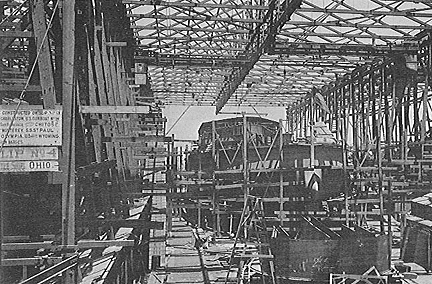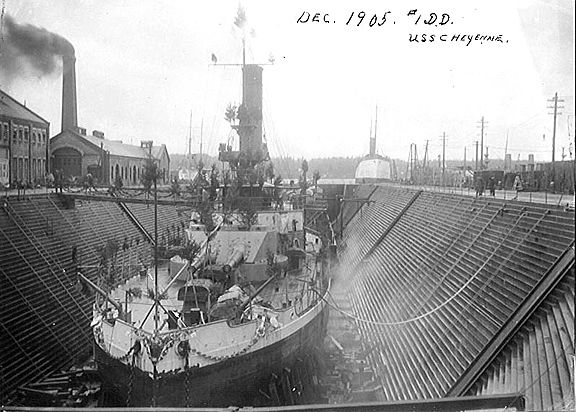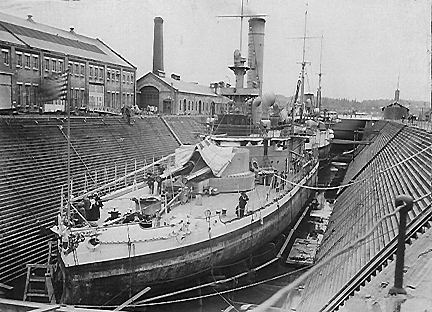United States Navy |
|||||||||||||||||||||||||||||||||||
Submarine Tenders |
|||||||||||||||||||||||||||||||||||
USS Wyoming / USS Cheyenne |
|||||||||||||||||||||||||||||||||||
 |
|||||||||||||||||||||||||||||||||||
| USS Wyoming / USS Cheyenne On the back of this Photo is noted: "Authorized in 1898, launched at Union Iron works 1900. This slant-front turret was installed about 1908. This may have been taken at SF - Looks like the Ferry Tower & the Claus Spreckles Bldg. down by Market St. |
|||||||||||||||||||||||||||||||||||
|
|
|||||||||||||||||||||||||||||||||||
|
|||||||||||||||||||||||||||||||||||
|
|
|||||||||||||||||||||||||||||||||||
After fitting out at Mare Island, Wyoming ran her trials and exercisesin San Pablo and San Francisco Bays and conducted exercises and targetpractice off the southern California coast through the summer of 1903.Before she headed south in the autumn, reaching Acapulco, Mexico, on 31October. She subsequently shifted further south, to Columbia, where a civilwar threatened American lives and interests. The monitor accordinglyarrived in Panamanian waters on 13 November and sailed up the Tuira River incompany with the protected cruiser Boston, with a company of marines underLt. S. A. M. Patterson, USMC, and Lt. C. B. Taylor, USMC, embarked, to landat "Yariza" and observe the movements of Colombian troops.
Meanwhile, Patterson's marines had joined the ship's landing force atthe village of Real to keep an eye on American interests there. Back at LaPalma, Wyoming continued to take on board American nationals fleeing fromthe troubled land and kept up a steady stream of supplies to her landingparty of bluejackets and marines at Real. Ultimately, when the need forthem had passed, the landing party returned to the ship on Christmas Eve. Wyoming remained in Panamanian waters into the spring of 1904 keeping afigurative eye on local conditions before she departed Panama Bay on 19April, bound for Acapulco. After remaining at that port from 27 to 29April, Wyoming visited Pichilinque, Mexico, from 3 to 9 May. Shesubsequently reached San Diego on the 14th for a nine-day stay. For the remainder of 1904 Wyoming operated off the west coast, rangingfrom Brighton Beach and Ventura, Calif., to Bellingham, Wash., and Portland,Oreg. She attended a regatta at Astoria, Oreg., from 22 to 27 August andlater took part in ceremonies at the un-veiling of monuments" at GriffinBay, San Juan Islands, and Roche Harbor before she entered the Puget SoundNavy Yard, Bremerton, Wash., on 22 October. Recommissioned on 8 October 1908, Comdr. John J. Knapp in command.Wyoming spent over two months at Mare Island refitting. Converted to oilfuel - the first ship to do so in the United States Navy - she underwenttests for her oil-burning installation at San Francisco, Santa Barbara, andSan Diego into March 1909. During those tests, Wyoming was renamed Cheyenne on 1 January 1909, inorder to clear the name Wyoming for the projected Battleship No. 32. Theship consequently underwent more tests on her oil-burning equipment at SantaBarbara, San Pedro, and San Diego before she was placed in reserve at MareIsland on 8 June. She was decommissioned on 13 November of the same year. Recommissioned, in reserve, on 11 July 1910, Lt. Comdr. C. T. Owens incommand, Cheyenne was assigned to the Washington (state) Naval Militia in1911 and operated in an "in commission, in reserve" status into 1913.Shifting to the Puget Sound Navy Yard early in February of 1913, Cheyennewas fitted out as a submarine tender over the ensuing months. Finally, on20 August 1913, Cheyenne was placed in "full commission," Lt. Kenneth Heronin command.
Cheyenne then resumed her submarine tending operations on the west coast, continuing them into 1917. [Supplemental: In 1916 Cheyenne was operating with submarines off the coast of Northern California. On 16 December 1916 while conducting exercises with protected cruiser MILWAUKEE (C-21)and submarine H-1 - H-1 ran aground in heavy fog]. On 10 April of that year [1917], four days after the United States entered World War I - she proceeded to Port Angeles, Wash., the designated point of mobilization for the Pacific Fleet, in company with the submarines H-1 (Submarine No. 28) and H-2 (Submarine No. 29), arriving there on the 16th. Subsequently shifting to the Puget Sound Navy Yard, Cheyenne remained at that port for most of a month, taking on stores and provisions, loading ammunition, and receiving men on board to fill the vacancies in her complement. On 28 April, Cheyenne guarded N-1 (Submarine No. 35) as she ran trials off Port Townsend, Wash. On 4 May, the warship returned to Puget Sound for drydock and yard work. Completing that refit late in May, Cheyenne shifted southward to San Pedro, Calif., where she established a submarine base and training camp for personnel for submarine duty. |
|||||||||||||||||||||||||||||||||||
| History from the Dictionary of American Fighting Ships. | |||||||||||||||||||||||||||||||||||
|
|
|||||||||||||||||||||||||||||||||||
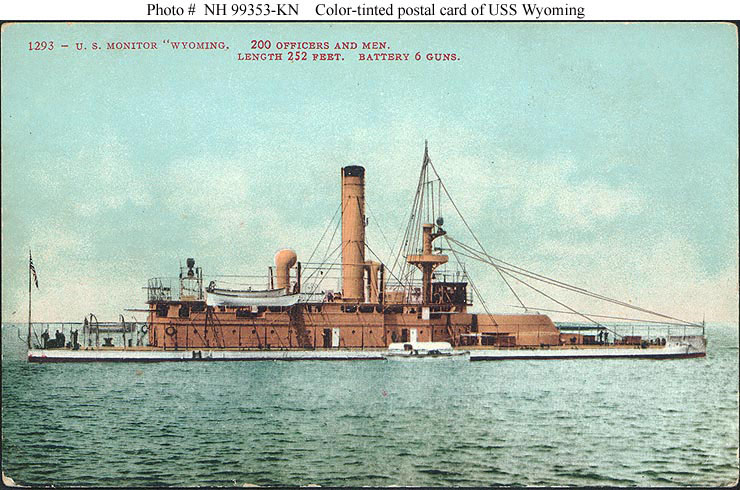 |
|||||||||||||||||||||||||||||||||||
|
|
|||||||||||||||||||||||||||||||||||
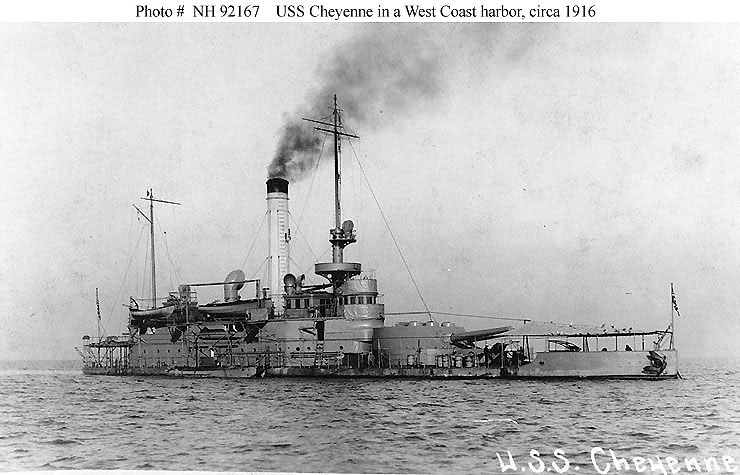 |
|||||||||||||||||||||||||||||||||||
|
|
|||||||||||||||||||||||||||||||||||
| USS Ozark | |||||||||||||||||||||||||||||||||||
| Table of Ships | |||||||||||||||||||||||||||||||||||
| Go to TenderTale Main Page | |||||||||||||||||||||||||||||||||||
| © 1997, 2006, & 2011 Common Cents Computers |
